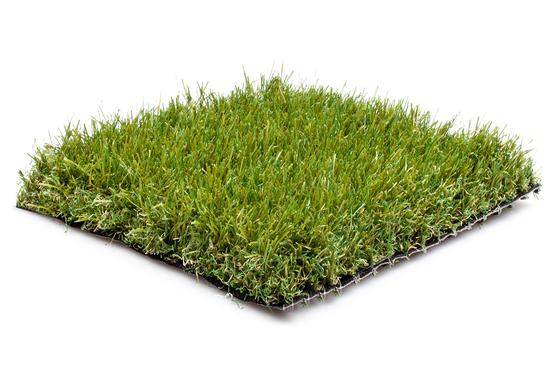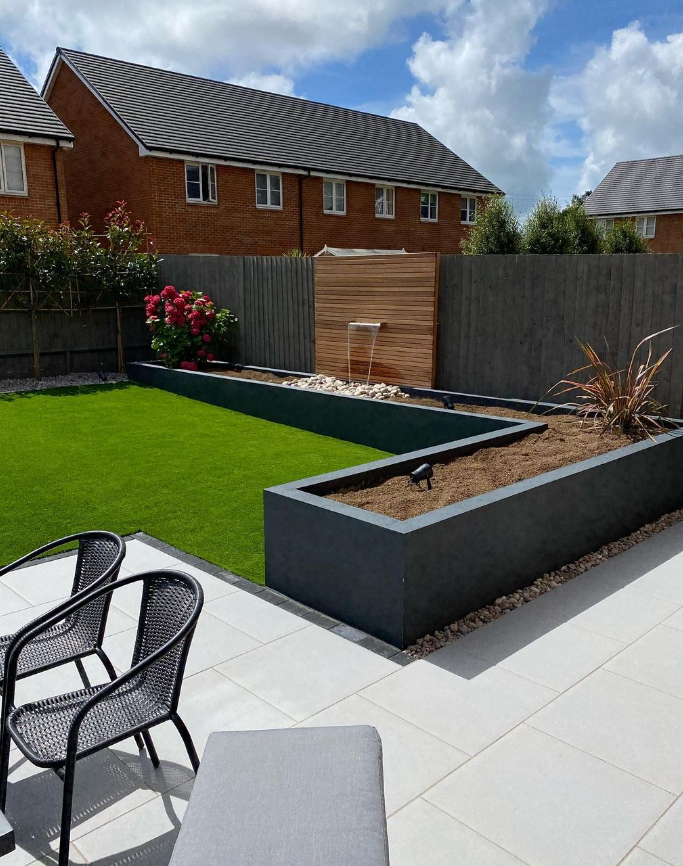
What is Composite Decking Made Of?
Composite decking has become a popular choice for outdoor spaces, offering a modern, durable alternative to traditional wood. Made from a combination of materials, it provides homeowners and DIY enthusiasts with a low-maintenance, long-lasting solution for their decking needs. Its growing popularity reflects the demand for environmentally friendly and versatile options that improve the appearance of outdoor areas.
This article focuses on the core elements of composite decking, from the materials used to the types available. We'll explain the manufacturing process, the environmental improvements, and the key features that make it a reliable choice for decking projects. If you're considering a new deck, understanding what goes into composite decking can help you decide with confidence.
Find out more about composite decking and why it’s a smart choice for your outdoor project.
Primary Materials Used in Composite Decking

Composite decking combines several key materials to create a durable and visually appealing product. The main components typically include wood fibres, plastics, and bonding agents, with each playing a major role in the final product.
-
Wood Fibres: These add strength and help replicate the natural appearance of timber. Often sourced from recycled or waste wood, they reduce dependence on raw wood materials.
-
Plastics: Commonly used types include high-density polyethene (HDPE), polypropylene (PP), or polyvinyl chloride (PVC). Plastics improve resistance to weathering, rot, mould, and insect damage. Recycled plastics are frequently incorporated to support sustainability.
-
Bonding Agents: These bind the wood fibres and plastics together, helping to create strong and reliable boards.
Manufacturers improve functionality and appearance by incorporating UV stabilisers, pigments, and anti-mould agents.UV stabilisers protect against sun damage, pigments provide consistent colouring, and anti-mould agents keep the surface cleaner for longer.
The use of these materials and advanced additives makes composite decking a practical and lasting choice for outdoor spaces.
The Manufacturing Process
The creation of composite decking involves several steps, each contributing to the strength and durability of the final product. Manufacturers combine raw materials, process them into a uniform mixture, and shape them into decking boards that are built to last.
-
Sourcing and Preparing Materials: The process begins with gathering recycled wood fibres and plastics, along with bonding agents and additional materials for improved performance. These components are cleaned, shredded, and prepared for blending.
-
Blending and Heating: The prepared materials are combined in precise ratios to form a composite mixture. This blend is heated to create a homogenous substance, where the wood and plastic particles merge for a consistent composition.
-
Extrusion or Moulding: The heated mixture is shaped into decking boards using extrusion or moulding techniques. Extrusion involves pushing the composite through a shaped die, while moulding compresses the material into pre-designed forms.
-
Finishing Touches: Once cooled, the boards undergo finishing processes. This step may include embossing for texture, cutting to size, or applying protective layers for added durability and colour stability.
Through these steps, manufacturers produce decking boards that meet the demands of modern outdoor living spaces while minimising waste through the use of recyclables.
Types of Composite Decking

Composite decking comes in a variety of types, offering options to suit different needs and preferences. Understanding these distinctions can help homeowners choose the right decking for their outdoor spaces.
Capped vs Uncapped Composite Decking
-
Capped decking has a protective layer for resistance to moisture, stains, and fading, offering vibrant, long-lasting performance.
-
Uncapped decking lacks this layer, making it more affordable but requiring extra care to maintain its appearance.
Solid vs Hollow Boards
-
Solid boards are sturdy and durable, ideal for high-traffic areas.
-
Hollow boards are lighter and more cost-effective, suited for weight-sensitive projects but need added support during installation.
Textures, Finishes, and Colours
Composite decking comes in smooth, woodgrain, and embossed textures, with colours ranging from natural timber tones to modern greys and blacks for versatile design options.
Premium vs Budget Options
Premium decking offers advanced features like UV protection and improved textures, while budget options focus on durability and low maintenance at a lower cost.
With so many options available, composite decking caters to a wide range of styles and budgets, making it a versatile choice for outdoor living areas.
Environmental Benefits of Composite Decking
Composite decking offers several environmental advantages, making it an appealing choice for those looking to reduce their environmental footprint while creating a durable outdoor space.
-
Use of Recycled Materials: Composite decking diverts waste from landfills by using recycled wood fibres and plastics, reducing reliance on virgin materials.
-
Longevity and Low Maintenance: Built to last, composite decking requires minimal upkeep, cutting the need for replacements and resources like paint or chemicals.
-
Eco-Friendly Transformation: Turning an old patio into a modern, eco-friendly lounge is simple with composite decking, which reduces maintenance time, minimises waste, and improves style.
-
Lower Environmental Impact: Composite boards are a sustainable alternative to timber, avoiding frequent replacement and harmful wood preservatives.
-
Certifications and Standards: Sustainability certifications, like FSC, ensure composite decking materials are responsibly sourced and eco-friendly.
By prioritising these materials and reducing the need for frequent upkeep, composite decking aligns with the needs of environmentally conscious homeowners while delivering a reliable and attractive solution.
Key Features of Composite Decking Materials

Composite decking offers a range of features that make it a practical and attractive choice for outdoor spaces. Its combination of durability, ease of care, and design versatility has made it a preferred option for many homeowners.
-
Durability and Weather Resistance: Composite decking is built to withstand harsh weather conditions, including rain, UV exposure, and temperature fluctuations. It resists warping, cracking, and rot, meaning that it maintains its structure over time.
-
Low Maintenance: Unlike traditional wood decking, composite boards require minimal upkeep. Occasional cleaning with soap and water is usually enough to keep them looking their best.
-
A DIY enthusiast upgraded their poolside with slip-resistant composite decking, providing safety for their kids and blending with the garden’s rustic design. The durable material held up against heavy foot traffic and weather, offering a low-maintenance solution.
-
Aesthetic Versatility: Available in a variety of textures, finishes, and colours, composite decking can complement modern, rustic, or classic outdoor designs. Options include woodgrain finishes for a natural appearance or sleek, smooth boards for a contemporary look.
-
Safety Features: Many composite decking products are designed to be slip-resistant, providing a safer surface for wet conditions. This makes them an excellent choice for families with children or outdoor areas near pools.
With these features, composite decking provides a reliable and visually appealing solution that requires less effort to maintain compared to traditional wood.
Composite decking stands out as a modern and practical solution for outdoor spaces, combining durability, low maintenance, and a range of design options. Made from a mix of wood fibres, plastics, and other materials, it provides an eco-friendly alternative to traditional timber decking.
This article has outlined the materials used, the manufacturing process, and the types of composite decking available. We’ve also highlighted its environmental advantages and the features that make it a popular choice for homeowners. With its long lifespan and ease of care, composite decking offers a smart investment for those looking to create an inviting and resilient outdoor area.
To find a wide range of composite decking options or learn about composite accessories, visit Tuda Grass and find the perfect fit for your next project.


